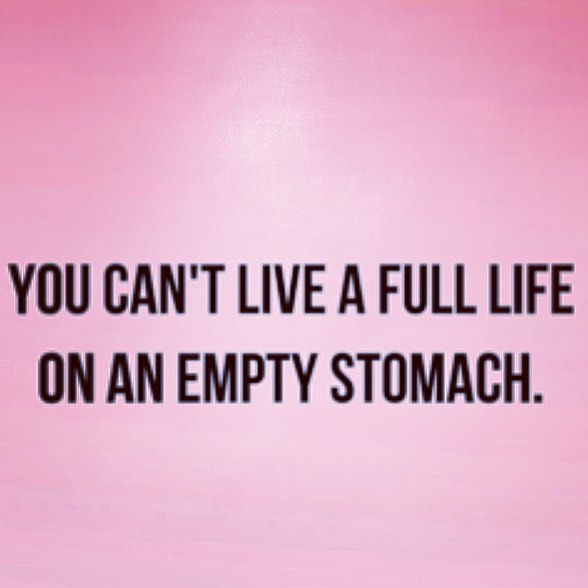Honoring Hunger and Satiety: The Key To Breaking Free From Food Obsession.
You’re sitting in front of the television engrossed in your favorite show on Netflix. You’re mindlessly snacking on a bag of chips only stopping when your right hand doesn’t find anything more to grab. You begin patting down the entire aluminum casing to confirm that there is nothing more. You come to your senses. Panic. Pick up that bag of Doritos in disbelief. And think to yourself, “I don’t remember even eating that….”
We live in a gluttonous, quick-fix society and many of us are ignoring our hunger and satiety cues on a daily basis to get more done, shed a few pounds, or even to avoid feeling. We search for fad diets and for quick weight loss tips. We avoid emotional issues that need to be dealt with. We mindlessly pick at food in the office, over order at popular restaurants and we lick our plates clean. We feel obsessed with food.
Want to know the secret to stopping the obsession?
.... honoring your hunger and respecting your satiety.

As a certified Intuitive Eating counselor, in addition to being a registered dietitian, I help my clients improve their relationship with both food and their bodies by working through the ten principles of the “Intuitive Eating” program. An intuitive eater is someone who makes food choices without feeling guilt or shame. Someone who honors hunger, respects fullness, and enjoys the pleasure of eating.
The key to honoring your hunger and satiety is attunement. I have my clients use a hunger and satiety scale to determine how hungry they are before they sit down to eat and then again after their meal to determine their level of fullness. It goes on a scale of 1 – 10. The number 1 being famished and the number 10 being so full you can burst!
3 Easy Steps to Honoring your Hunger and Satiety:
1. Write it down: Use a hunger and satiety scale and challenge yourself to a week of food journaling. Check in before and after meals and snacks to evaluate hunger and fullness. Rate your hunger and fullness on a scale of 1 – 10 and write it next to what you ate. Be sure to track meal times as well. A comfortable full will leave you happily full for 3 – 4 hours before you start having thoughts of food again. By writing it down you can see which meals and meal patterns are successful for you.
2. Become a “Conscious Eater”: Do not eat on the go. Become a conscious eater by eating in a satisfying environment free of distractions. Chew slowly and carefully and enjoy the taste of what you eat. By focusing on the food itself during a meal, you may discover things like taste, textures and temperatures you've never realized before.
3. Don’t let yourself get to a “1”: The secret to eating healthy portions of healthier food options is to never let yourself get to a “1.” Studies show that we eat much more than we need when we are famished because our bodies think we are starving. At a “1”, our blood glucose levels get too low and then we reach for sugary ready-to-eat foods for a quick blood sugar spike.
4. Make sure you get to a "7": Make sure you get FULL! Living in a diet focused world makes us think we should stop eating before we are comfortably full. Don't do this. Make sure you eat enough to feel SATIATED. If not, those obsessive thoughts about food are likely to continue to linger.
Want to learn more about becoming an intuitive eater and better your relationship with food and your body? Contact Registered Dietitian / Licensed Nutritionist, Julie Rothenberg for more information at julienergynutrition@gmail.com or find her at www.julienergynutrition.com.
References:
Resch, E., Tribole, E. Intuitive Eating – A Revolutionary Program that Works (New York: 2003).





















